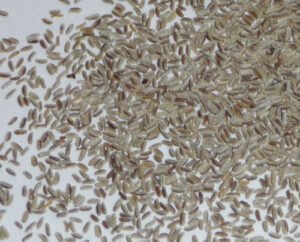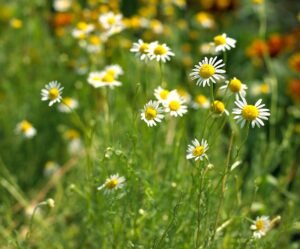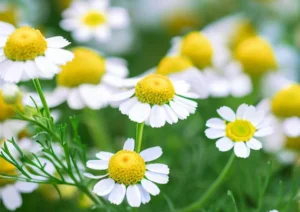How to Grow Chamomile in Your Garden
Chamomile is a versatile and delightful herb known for its daisy-like flowers, soothing scent, and its use in herbal teas. If you’ve ever dreamed of growing your own relaxing tea garden or simply want to add an easy-care plant to your flower beds, chamomile is an excellent choice. Not only is it easy to grow, but it also provides a host of benefits for your garden and your health.
In this article, we’ll take you through everything you need to know about growing chamomile in your garden, from choosing the right variety to care and harvesting tips. Whether you’re a seasoned gardener or just getting started, you’ll soon have chamomile thriving in your garden and ready to brew into calming tea.
Why Grow Chamomile?
Before we jump into the “how-to” of growing chamomile, let’s talk about why you should add this herb to your garden:
- Easy to Grow: Chamomile is a low-maintenance herb that’s perfect for beginners. It grows well in various conditions and doesn’t require much attention.
- Natural Relaxant: Chamomile tea is known for its calming properties, making it a popular herbal remedy for stress relief and sleep.
- Beneficial to the Garden: Chamomile attracts beneficial insects like bees and ladybugs, which help pollinate plants and keep pests in check.
- Beautiful Blooms: The cheerful white and yellow flowers add charm to any garden space and can be used fresh or dried in homemade herbal remedies.
Choosing the Right Chamomile Variety
There are two main types of chamomile you can grow in your garden: German Chamomile (Matricaria chamomilla) and Roman Chamomile (Chamaemelum nobile). Each has its own unique characteristics, so it’s important to choose the variety that suits your needs.
1. German Chamomile
- Annual: German chamomile is an annual plant, which means it will die off after a single growing season. However, it easily reseeds itself, so you’ll likely find it coming back year after year.
- Height: Grows taller than Roman chamomile, reaching up to 24 inches.
- Best for Tea: German chamomile is the variety most commonly used for making herbal tea.
- Flowers: Produces delicate white flowers with a sweet, apple-like fragrance.
2. Roman Chamomile
- Perennial: Roman chamomile is a perennial plant, meaning it will return year after year if properly cared for.
- Height: Grows shorter, typically around 6-12 inches, making it a good ground cover.
- Best for Landscaping: Roman chamomile is often used as a lawn substitute or decorative ground cover, thanks to its low-growing habit and lush greenery.
- Flowers: Its flowers are similar to German chamomile but slightly larger and more fragrant.
For those looking to grow chamomile primarily for tea, German chamomile is the better choice. However, if you want a plant that doubles as an attractive, fragrant ground cover, Roman chamomile may be more suitable.
How to Grow Chamomile: Step-by-Step Guide
1. Planting Chamomile from Seeds or Seedlings
Chamomile can be grown from either seeds or young plants (seedlings). Starting from seeds is inexpensive and easy, but if you’re looking for quicker results, you can buy seedlings from your local nursery.

Growing Chamomile from Seeds:
- When to Plant: Start chamomile seeds indoors 4-6 weeks before the last frost in your area or sow them directly in the garden after the danger of frost has passed.
- Seed Depth: Chamomile seeds are tiny and should be planted on the surface of the soil. They need light to germinate, so lightly press them into the soil without covering them.
- Germination Time: Chamomile seeds typically germinate in 7-14 days, depending on temperature and growing conditions.
- Spacing: If planting outdoors, space the seeds or seedlings about 6-8 inches apart to allow room for growth.
Growing Chamomile from Seedlings:
- When to Plant: Transplant chamomile seedlings into your garden after the last frost date, when the soil has warmed up.
- Transplanting: Be gentle when handling chamomile seedlings, as their roots are delicate. Dig a hole large enough to accommodate the root ball, place the seedling in the hole, and gently firm the soil around it.
2. Choosing the Right Location
Chamomile thrives in areas with full sun, although it can tolerate partial shade, especially in hot climates. Choose a spot in your garden that gets at least 6 hours of sunlight a day. Chamomile grows well in garden beds, raised beds, or even containers, making it versatile for different gardening setups.
3. Soil Requirements
Chamomile prefers well-drained, moderately rich soil. Here’s how to prepare the soil for optimal chamomile growth:
- pH: Chamomile grows best in soil with a slightly acidic to neutral pH (6.0-7.5). You can test your soil’s pH with a home test kit and amend it as needed with lime (to raise pH) or sulfur (to lower pH).
- Amendments: Chamomile doesn’t require particularly rich soil, but adding some organic compost can help improve soil structure and provide nutrients.
- Drainage: Ensure the soil is well-draining, as chamomile does not tolerate soggy conditions. If you have heavy clay soil, consider planting chamomile in raised beds or containers.
4. Watering Chamomile
Chamomile is fairly drought-tolerant once established, but it does best with consistent watering. Keep the following tips in mind:
- Young Plants: Water newly planted seeds or seedlings regularly to help them establish strong roots.
- Established Plants: Once mature, chamomile plants only need watering when the soil is dry. Overwatering can lead to root rot, so always allow the top layer of soil to dry out between waterings.
- Containers: If growing chamomile in pots, monitor the soil moisture more closely, as pots dry out faster than garden beds.
5. Mulching and Fertilizing
Mulching can help retain moisture and prevent weeds from competing with your chamomile plants. Spread a thin layer of organic mulch, such as straw or compost, around the base of the plants.
Chamomile doesn’t need much fertilizer. In fact, too much fertilization can lead to excess foliage growth at the expense of flowers. A light application of compost or an organic, balanced fertilizer in the spring should be enough to keep your chamomile plants healthy.
6. Pruning and Harvesting Chamomile
One of the most rewarding aspects of growing chamomile is harvesting the flowers to use in teas, tinctures, or homemade beauty products.
Pruning:
- Prune chamomile plants lightly throughout the growing season to promote bushier growth and prevent the plants from becoming too leggy.
- Deadheading (removing spent flowers) encourages the plant to produce more blooms and extends the flowering period.
Harvesting:
- When to Harvest: The best time to harvest chamomile flowers is when they are fully open, typically in mid-summer. The white petals should be flat or just starting to bend backward.
- How to Harvest: Snip the flower heads off using scissors or your fingers, leaving a few inches of stem attached. Harvest in the morning after the dew has dried but before the sun is too intense.
- Drying Chamomile: To dry chamomile for tea, spread the flowers in a single layer on a screen or paper towel in a cool, dry place with good air circulation. Once completely dry, store the flowers in an airtight container away from light and moisture.
7. Common Pests and Diseases
Chamomile is relatively pest-resistant, but like all plants, it can occasionally face problems:
- Aphids: These tiny insects can be a nuisance on chamomile plants. They can be removed by spraying the plant with water or applying insecticidal soap.
- Powdery Mildew: In humid conditions, chamomile may develop powdery mildew, a white, powdery fungus on the leaves. Prevent it by ensuring good air circulation and avoiding overhead watering.
- Root Rot: Overwatering or poorly draining soil can lead to root rot. Ensure proper drainage and avoid watering too frequently.
Using Chamomile: Beyond the Garden
Once you’ve successfully grown chamomile, you can start using it in a variety of ways:

1. Chamomile Tea
Chamomile tea is the most popular way to use chamomile flowers. Simply steep a tablespoon of dried chamomile flowers in a cup of hot water for 5-10 minutes. The result is a soothing tea that can help promote relaxation and ease digestive discomfort.
2. Chamomile Oil
Chamomile oil can be made by infusing fresh or dried flowers in a carrier oil (such as olive or coconut oil) for several weeks. This oil can be used in homemade beauty products, such as lotions or salves, or applied directly to the skin to soothe irritation.
3. Chamomile in Skincare
Chamomile’s anti-inflammatory and antibacterial properties make it an excellent addition to skincare products. You can use chamomile tea as a facial toner or add dried chamomile flowers to homemade bath salts or scrubs.
Conclusion
Growing chamomile in your garden is not only easy but also incredibly rewarding. Whether you’re looking to enjoy fresh, homemade chamomile tea or simply want to add a beautiful and fragrant plant to your garden, chamomile is a fantastic choice. With the right care and a little patience, you’ll soon have a flourishing chamomile patch that will keep providing you with blooms season after season.
Now that you know how to grow chamomile, why not give it a try? Your garden (and your teacup) will thank you!




